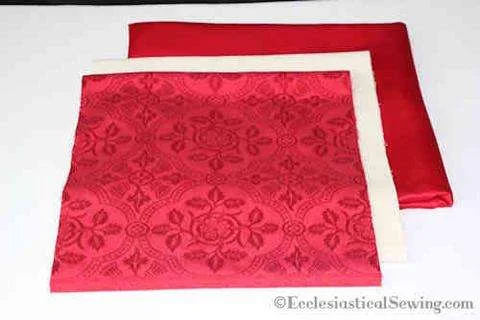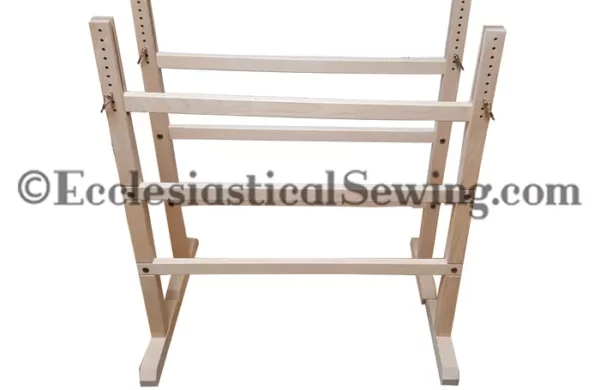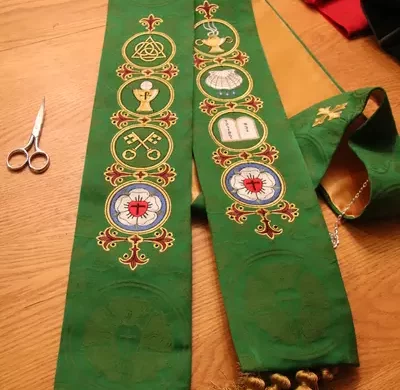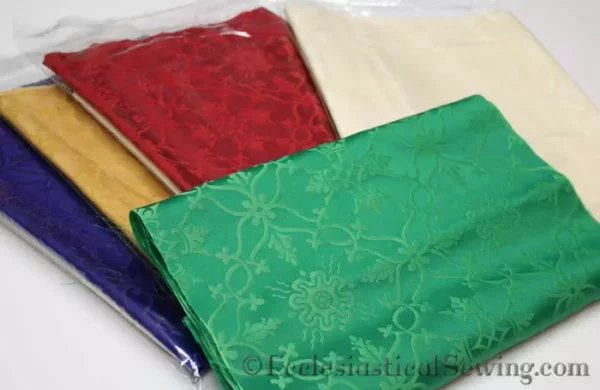
Our 4.5” stole pattern is the second of the two patterns that work with size “A” cut kits–this one works with all of the kit sizes. This stole pattern is also our standard. this 4.5” stole is the “go to” stole design. 4.5 inches means the finished width of the stole. It is a great one-size-fits-all and this allows for the flexibility of use.
Like this:
Like Loading...

Our 3.5” stole pattern is one of the two patterns that work with size “A” cut kits–that is all the kits. So the 3.5” pattern is a safe bet for stole-making. The 3.5” stole pattern is extra special. This versatile pattern can create a stole that is worn as a deacon stole and as a priest/pastor stole later. One pattern. One stole. Two ways to wear! It is a bit narrower and this allows for the flexibility of use. Each of our stole patterns has the option for different lengths of hem, which is perfect for sewing for different heights.
Like this:
Like Loading...

October 8th, is clergy appreciation day in the USA. Ecclesiastical Sewing is, of course, your number one source for designing something spectacular for your pastor, priest, bishop, or other clergy members.
Like this:
Like Loading...

Size “A” is all that is available for all the other fabrics: Luther Rose Brocade, Evesham Lurex Brocade, Litchfield Brocade, St. Aidan Brocade, York Brocade, Cloister Brocade, Florence Brocade, Fairford Two Toned Brocade, Fairford Brocade, Ely Crown Brocade, Glastonbury Brocade, and Winchester Brocade. When you select one of these and put it in your cart for purchase, you are only purchasing enough to make a 3.5” or 4.5” stole.
Size “B” stoles– V-neck stoles, Deacon stoles, Tapered stoles, and 5” stoles. Each pattern of the brocade is different and so must be cut according to that specific pattern repeated.
Like this:
Like Loading...

A stole kit, by definition, is a pre-cut length of the face fabric, canvas interfacing, and lining. The necessary items include but are not limited to patterns, instructions, sewing pins, scissors, a sewing machine, a needle for hand sewing, and appropriate thread colors.
Like this:
Like Loading...

Our stole kits are available in both silk dupioni and various brocades. So there is a wide selection of materials and within those material options, there are many color shades.
Like this:
Like Loading...

Finishing stole ends can be done in various ways, but let’s focus on mitered corners. After folding and pressing the sides and bottoms, create a little triangle at the corner. Pin the edges at the miter and start lacing. Anchor the thread with small stitches and then take staggered stitches along the fold, ensuring edges won’t separate. Continue lacing to the end, then stitch back up. Though mitered corners can be challenging, practicing can lead to beautiful finishes.
Like this:
Like Loading...
November 10th–15th, in Canton, Mississippi, there will be a conference dedicated solely to liturgical arts. Carrie will be teaching a class on Church Vestment Making. So probably has something to do with stole-making and pulpit fall-making! That alone is worth the trip. Carrie is beyond excited to reach many people and share her love of making beautiful vestments to glorify the church. Another class that will be incredibly valuable will be the class on Keeping the Art of Needlepoint Alive
Like this:
Like Loading...

The gift of a stole is always something to be appreciated. To help with that, we have developed a variety of stole patterns. There is a 3 1/2-inch stole as well as a 4 1/2-inch stole. The lines of these stoles are identical. It is the width that is different. The stoles have a gently shaped neckline that fits well and then falls from the shoulder. The stoles are adjustable in length. The short length is 51 inches, and the longest length is 55 inches. The tapered stole has the same neckline curve as our other stoles. It then falls to a wider width at the lower end. The stole is available in a short length that works with a full surplice or a longer length. And the V-neck stole a wider stole that uses the same width down the length of the entire stole.
Like this:
Like Loading...

The slate frame, available in various sizes, creates a secure foundation for embroidery, with fabric tightly stretched using twill tape and lacing. To make the embroidery process more comfortable, trestle stands hold the slate frame at an adjustable height, allowing for hands-free stitching.
Like this:
Like Loading...

We enter a season filled with green trees and grass dotted with bright pink, purple, red, and white the flowers blooming profusely all around us. One glance around nature provides a feast of green shades for the eye to behold. It brings the entire world to life. Green is also the color for ordinary times in the church years. With the long Trinity Season or the “Green” Season just getting underway in the church year.
Like this:
Like Loading...

The chasuble pattern is a graceful Monastic style chasuble that is wide, full, and long. The pattern is created in several sizes and has things like lengthening and shortening lines for further customization. The pattern has notches for matching seams when sewing. There is a separate pattern piece for the front and back orphrey band as well as a neckline facing piece.
Like this:
Like Loading...

Our goal and mission at Ecclesiastical Sewing are to provide high-quality fabrics, trims, designs, and finished vestments suitable for use in the service of the church. To do a better job at that, Hoping that we might get some feedback and suggestions from you, our faithful readers, as well as from members of the clergy.
Like this:
Like Loading...

Ecclesiastical Sewing Pastoral Stole Collection. The styles include St. Gregory Silk Dupioni, St. Ambrose, St. Michael, St. Jerome, and St. Augustine. Each stole featuring unique orphrey bands, a gold cross at the neckline, and tassels along the bottom edges. Additionally, there is an Alpha-Omega stole in ivory. These pastoral stoles are now ready for purchase on our website, and we’re working on creating seasonally colored stoles for each style.
Like this:
Like Loading...

Ecclesiastical Sewing offers a variety of clergy stole patterns, including the 4 1/2″ wide pastoral or priest stole pattern. Refined over time and digitized by a professional pattern maker, it includes traditional markings, grain lines, and notches for easy assembly.
Like this:
Like Loading...















You must be logged in to post a comment.